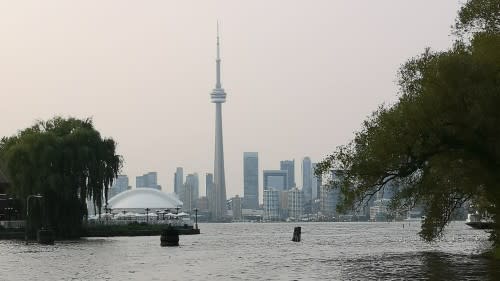How Canada's summertime tourism is adapting to and combating climate change
Canada’s warming climate is continuing to strain winter tourism in the country, reducing the number of days where visitors can ski or skate. While, in theory, this would seem to benefit summer tourism, the future of warm-weather tourism in the country faces its own slew of risks.
According to experts, the touristy parts of the country need to find ways to adapt to the reality as Canada’s climate continues to be impacted by greenhouse gas emissions, mostly from burning fossil fuels.
“These are the new realities of tourism in an era of climate change,” Daniel Scott, a researcher with the University of Waterloo’s environment faculty, told The Weather Network.
Micah Hewer, a professor in the University of Toronto’s department of environmental studies, is the author of a study reviewing academic literature on climate change and Canadian tourism between 1986 and 2016. He said Canada can expect to see forest fires, wildfire smoke, and a loss of charismatic species, including trees.
Other issues include the spread of pests and diseases that tourists could contract outdoors such as Lyme disease, thanks to the encroachment of ticks in Canada. Then there are the effects of sea level rise and extreme storms threatening coastal attractions, and wildfire smoke adding nutrients to lakes and rivers causing algal blooms, making outdoor swimming less appealing or dangerous.
Additionally, wildfires also pose a threat to the Okanagan’s tourist-friendly wine industry. Wildfires can burn acres of land, and smoke can taint the flavour of the grapes, potentially impacting the wine’s quality.

A scenic shot of Toronto while the city's air is full of smoke in 2021. (Parth Shah/Pexels)
Risks and opportunities
These effects aren’t spread evenly across the country either, according to Scott. Not every part of Canada is expected to see an increase in dry, wildfire-friendly conditions like Alberta, nor the increased intensity in hurricanes expected to be seen in the Maritimes.
In some cases, touristy parts of Canada will need to adapt to their new climate realities. Operators can find ways to communicate that alternative activities and spots are available in cases where climate change’s impacts get to be too much.
For example, facing down more severe storms and sea level rise, some tourism businesses in the Maritimes that offer things like boat tours and those offering snorkeling or fishing may need to upgrade. This can include physically raising up their facilities to avoid flooding or setting up erosion barriers. In heavily forested areas, like Revelstoke, B.C., towns that rely heavily on tourism may want to create fuel breaks, a process that involves strategically removing trees from certain areas to reduce the risk of wildfires.
According to Scott, businesses and tourism groups also need to consider better ways to communicate the risks that can come with climate change to their visitors. This is particularly true in cases where tourists don’t speak English or French. Another issue to grapple with is that sometimes, visitors might want to steer clear of their phones and computers, meaning they could miss vital extreme weather or air quality warnings.
Emissions and admissions
Meanwhile, some tourist spots might fare quite well in the summer as climate change progresses, as long as they adapt, according to Hewer. For example, warming in the Arctic means the seaways there stay ice-free for longer during the summer, making tourism and cruises easier, he said.
However, even if climate change isn’t necessarily bad for tourism in an area, tourism brings the potential for increased emissions and, as such, more climate change. Arctic cruises mean more greenhouse gas emissions from the ships, for instance.
Hewer added that certain forms of tourism are worse for the climate than others. For instance, driving a few hours away to camp in a tent in a provincial park doesn’t have the biggest carbon footprint, especially compared to a long-haul flight to Canada’s Arctic or a lengthy cruise through the region.
“There are certain tourism activities that seem to be increasing because of climate change that unfortunately, and ironically, are the greatest contributors to climate change,” he said.
According to Scott, it’s important for the tourism industry to reduce its own emissions as well. This could take the form of enabling low-emission transportation methods, such as installing electric vehicle charging stations.
According to Ellen Walker-Matthews, CEO of the Thompson Okanagan Tourism Association, some businesses have been taking more eco-friendly approaches. In the Okanagan, for example, CedarCreek Winery, near Kelowna, has shifted to organic farming processes. Meanwhile, the region’s Summerland Waterfront Resort is making use of geothermal power and energy efficiency. On the other side of the country, some tourism businesses in Quebec are also attempting to go green, such as Domaine Floravie, which offers visitors tiny homes with solar panels surrounded by the region’s natural beauty.
“Overall, none of us want to lose our natural beauty or natural resources,” Walker-Matthews told The Weather Network.
Thumbnail image: A wooden dock is seen near Whistler, B.C., during the summer time. (James Wheeler/Pexels)

